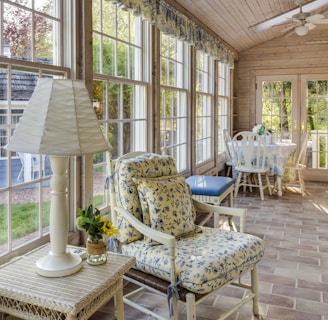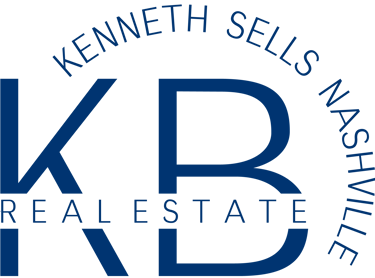Existing-Home Sales Edged Lower by 0.5% in April
Existing-home sales slowed in April, according to the National Association of REALTORS®.
MARKET CONDITIONSEXISTING-HOME SALES


Existing-Home Sales Edged Lower by 0.5% in April
National Association of REALTORS®, article by Troy Green | May 22, 2025
KEY HIGHLIGHTS
Existing-home sales slid 0.5% in April to a seasonally adjusted annual rate of 4.00 million. Sales retreated 2.0% from one year ago.
The median existing-home sales price rose 1.8% from April 2024 to $414,000, an all-time high for the month of April and the 22nd consecutive month of year-over-year price increases.
The inventory of unsold existing homes bounced 9.0% from the previous month to 1.45 million at the end of April, or the equivalent of 4.4 months' supply at the current monthly sales pace.
WASHINGTON (May 22, 2025) – Existing-home sales slowed in April, according to the National Association of REALTORS®. Sales dipped in the Northeast and West, grew in the Midwest and were unchanged in the South. Year-over-year, sales declined in three regions and remained steady in the Northeast.
Total existing-home sales – completed transactions that include single-family homes, townhomes, condominiums and co-ops – slipped 0.5% from March to a seasonally adjusted annual rate of 4.00 million in April. Year-over-year, sales descended 2.0% (down from 4.08 million in April 2024).
"Home sales have been at 75% of normal or pre-pandemic activity for the past three years, even with seven million jobs added to the economy," said NAR Chief Economist Lawrence Yun. "Pent-up housing demand continues to grow, though not realized. Any meaningful decline in mortgage rates will help release this demand."
Total housing inventory registered at the end of April was 1.45 million units, up 9.0% from March and 20.8% from one year ago (1.2 million). Unsold inventory sits at a 4.4-month supply at the current sales pace, up from 4.0 months in March and 3.5 months in April 2024.
The median existing-home price for all housing types in April was $414,000, up 1.8% from one year ago ($406,600). The Northeast and Midwest posted price increases, and the South and West registered price decreases.
"At the macro level, we are still in a mild seller's market," Yun said. "But with the highest inventory levels in nearly five years, consumers are in a better situation to negotiate for better deals."
REALTORS® Confidence Index
According to the monthly REALTORS® Confidence Index, properties typically remained on the market for 29 days in April, down from 36 days in March but up from 26 days in April 2024.
First-time home buyers were responsible for 34% of sales in April, up from 32% in March and 33% in April 2024. NAR's 2024 Profile of Home Buyers and Sellers – released November 2024 – found that the annual share of first-time home buyers was 24%, the lowest ever recorded.
Cash sales accounted for 25% of transactions in April, down from 26% in March and 28% in April 2024.
Individual investors or second-home buyers, who make up many cash sales, purchased 15% of homes in April, identical to March and down from 16% in April 2024.
Distressed sales – foreclosures and short sales – represented 2% of sales in April, down from 3% in March and unchanged from the previous year.
Mortgage Rates
According to Freddie Mac, the 30-year fixed-rate mortgage averaged 6.81% as of May 15. That's up from 6.76% one week before but down from 7.02% one year ago.
Single-family and Condo/Co-op Sales
Single-family home sales waned 0.3% to a seasonally adjusted annual rate of 3.63 million in April, down 1.4% from the prior year. The median existing single-family home price was $418,000 in April, up 1.7% from April 2024.
Existing condominium and co-op sales faded 2.6% in April to a seasonally adjusted annual rate of 370,000 units, down 7.5% from one year ago. The median existing condo price was $370,100 in April, up 1.4% from the previous year ($364,900).
Regional Breakdown
In April, existing-home sales in the Northeast fell 2.0% from March to an annual rate of 480,000, identical to April 2024. The median price in the Northeast was $487,400, up 6.3% from one year earlier.
In the Midwest, existing-home sales improved 2.1% in April to an annual rate of 970,000, down 1.0% from the prior year. The median price in the Midwest was $313,300, up 3.6% from April 2024.
Existing-home sales in the South were unchanged from March at an annual rate of 1.81 million in April, down 3.2% from one year before. The median price in the South was $365,300, down 0.1% from last year.
In the West, existing-home sales contracted 3.9% in April to an annual rate of 740,000, down 1.3% from a year ago. The median price in the West was $628,500, down 0.2% from April 2024.
About the National Association of REALTORS®
As America's largest trade association, the National Association of REALTORS® is involved in all aspects of residential and commercial real estate. The term REALTOR® is a registered collective membership mark that identifies a real estate professional who is a member of the National Association of REALTORS® and subscribes to its strict Code of Ethics.
Existing-home sales, which include single-family, townhomes, condominiums and co-ops, are based on transaction closings from Multiple Listing Services. Changes in sales trends outside of MLSs are not captured in the monthly series. NAR benchmarks home sales periodically using other sources to assess overall home sales trends, including sales not reported by MLSs.
Existing-home sales, based on closings, differ from the U.S. Census Bureau's series on new single-family home sales, which are based on contracts or the acceptance of a deposit. Because of these differences, it is not uncommon for each series to move in different directions in the same month. In addition, existing-home sales, which account for more than 90% of total home sales, are based on a much larger data sample – about 40% of multiple listing service data each month – and typically are not subject to large prior-month revisions.
The annual rate for a particular month represents what the total number of actual sales for a year would be if the relative pace for that month were maintained for 12 consecutive months. Seasonally adjusted annual rates are used in reporting monthly data to factor out seasonal variations in resale activity. For example, home sales volume is normally higher in the summer than in the winter, primarily because of differences in the weather and family buying patterns. However, seasonal factors cannot compensate for abnormal weather patterns.
